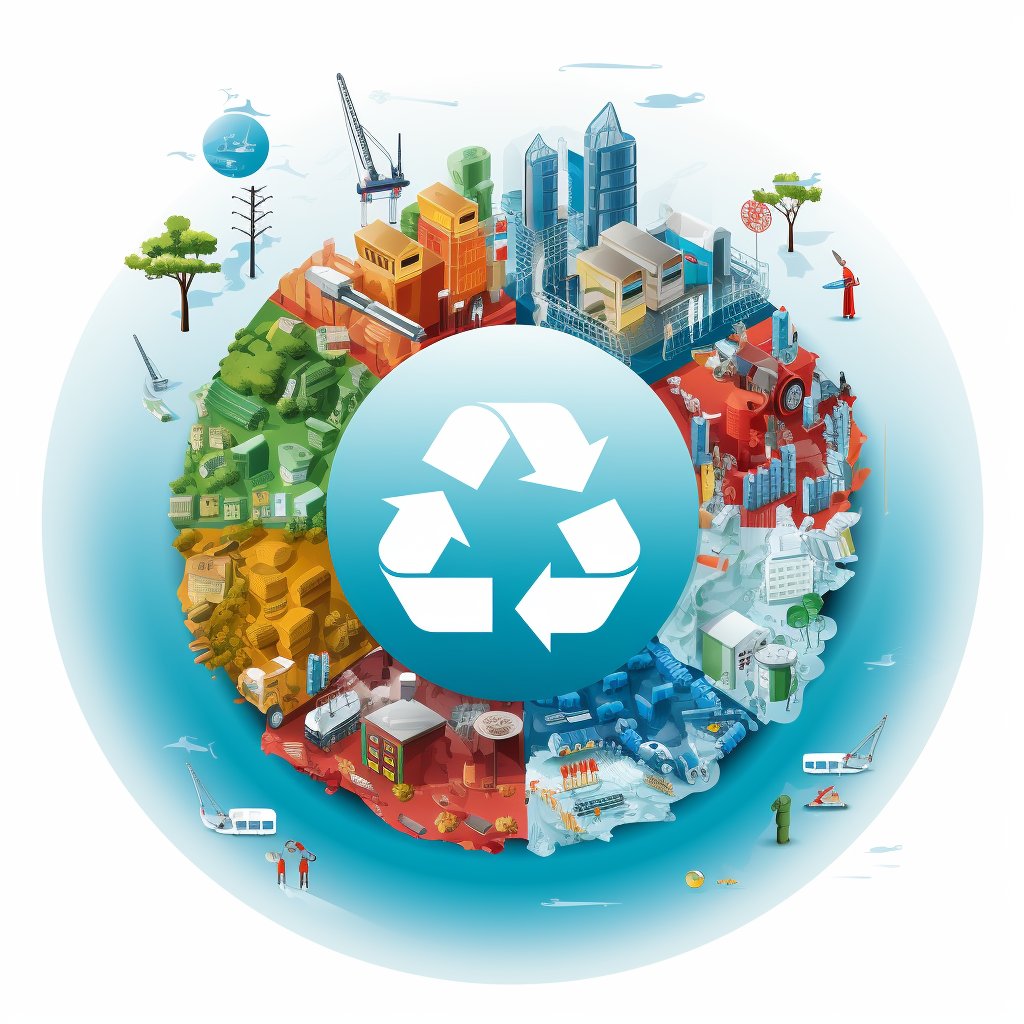Digital Reverse Vending Systems (dRVM): Revolutionising Recycling in the Plastics Industry
The increasing concern for the environment and the rising demand for sustainable solutions have prompted industries to explore new ways to recycle waste materials. The plastics industry is one of the major contributors to environmental pollution, and as such, there is a need to adopt innovative recycling technologies. Digital Reverse Vending Systems (dRVM) are a cutting-edge solution that is transforming the recycling industry.
The world has recently witnessed a growing concern over plastic waste and its environmental impact. Digital Reverse Vending Systems (dRVM) have emerged as a potential solution to address this issue. These innovative systems incentivise recycling by offering rewards and sorting waste materials, helping to reduce contamination and improve the quality of recyclable materials.

Industrial Usage:
Digital Reverse Vending Systems (dRVM) are automated machines that accept empty beverage containers and other recyclable materials from consumers and provide incentives such as cash, vouchers, or coupons. The machines are designed to handle different recyclable materials, including plastics, glass, and aluminium. The use of dRVM in the plastics industry is gaining momentum due to its effectiveness in recycling plastic waste.

Application Areas:
Digital Reverse Vending Systems (dRVM) have a wide range of applications, including:
- Public Spaces: dRVMs can be placed in public spaces such as shopping malls, airports, and train stations, making it easy for consumers to dispose of waste materials.
- Retail Stores: Retail stores can use dRVMs to incentivise customers to return empty beverage containers and other recyclable materials.
- Recycling Centres: Recycling centres can install dRVMs to increase the efficiency of their recycling processes and reduce labour costs.
Consumer Product Examples:
Digital Reverse Vending Systems (dRVM) are used to recycle different types of consumer products, such as:
- Plastic Bottles: dRVMs can recycle plastic bottles of different shapes and sizes.
- Aluminium Cans: dRVMs can also recycle aluminium cans, reducing waste sent to landfills.
- Glass Bottles: dRVMs can recycle glass bottles, which are otherwise difficult to recycle due to their weight and fragility.
Material Properties:
Digital Reverse Vending Systems (dRVM) are designed to handle different recyclable materials with other properties. The machines are equipped with sensors that can detect the type of material and sort them accordingly. For instance, dRVMs can differentiate between different types of plastic, such as PET, HDPE, and LDPE, and sort them for recycling.
Future Trends in Recycling:
Digital Reverse Vending Systems (dRVM) are part of a broader trend towards automation and digitisation in the recycling industry. The use of artificial intelligence and machine learning in dRVMs is expected to increase the efficiency of recycling processes and improve the accuracy of material sorting. Furthermore, using blockchain technology in dRVMs can enhance transparency in the recycling process, ensuring that recycled materials are appropriately tracked and accounted for.
Different Types of Digital Reverse Vending Systems (dRVM):
There are different types of dRVM in the market, each with unique features and capabilities. These include:
- Standalone dRVM: This type of dRVM is a single unit that operates independently, making it ideal for small businesses and public spaces.
- Modular dRVM: Modular dRVM consists of multiple units that can be configured to form a recycling station, making it suitable for more extensive operations.
- Cloud-based dRVM: This type of dRVM is connected to a cloud-based system that allows for remote monitoring and management of the recycling process.
Market Price Developments:
The market price for dRVMs varies depending on the type, features, and capabilities. As of 2021, the average price for a standalone dRVM ranges from $3,500 to $5,000, while a modular dRVM can cost between $15,000 and $25,000. Cloud-based dRVMs are more expensive, ranging from $50,000 to $100,000. However, the prices are expected to decrease as technology advances, making dRVMs more accessible to businesses and organisations.
Global Impact:
Digital Reverse Vending Systems (dRVM) have a significant global impact, contributing to the reduction of waste materials and promoting sustainability. Adopting dRVMs has led to increased recycling rates, reduced landfill waste, and lower carbon emissions. In countries such as Norway, Germany, and Sweden, the use of dRVMs has reached saturation levels, with over 90% of plastic bottles recycled. The adoption of dRVMs is expected to increase globally, driven by the need for sustainable solutions and the growing awareness of the impact of waste on the environment.
Future Market Prognosis:
The global market for Digital Reverse Vending Systems (dRVM) is expected to grow significantly in the coming years. The adoption of dRVMs is driven by the need for sustainable solutions, government regulations, and consumer demand. The market is expected to be caused by Asia Pacific, with countries like China and India leading the way. Furthermore, integrating artificial intelligence, machine learning, and blockchain technology in dRVMs is expected to improve the efficiency of the recycling process, increase accuracy in material sorting, and provide greater transparency in the recycling industry.
Environmental Impact:
Digital Reverse Vending Systems (dRVM) have a positive environmental impact by reducing waste sent to landfills and promoting recycling. By incentivising consumers with rewards, dRVMs encourage separating and sorting waste materials, resulting in better quality recyclable materials. This, in turn, reduces the demand for virgin materials, conserving natural resources and reducing greenhouse gas emissions.
Economical Impact:
Digital Reverse Vending Systems (dRVM) also have a positive economic impact by reducing the cost of waste management and providing a new revenue stream for businesses. By incentivising consumers to recycle, dRVMs can reduce the amount of waste sent to landfills, resulting in lower landfill fees. The collected recyclable materials can also be sold to recycling companies, providing a new revenue stream for businesses and organisations.
Process of Digital Reverse Vending Systems (dRVM):
The process of using a Digital Reverse Vending System (dRVM) involves the following steps:
- Deposit: The user deposits the empty container into the machine’s receptacle.
- Scanning: The dRVM scans the barcode or RFID tag on the container to identify the material type and its value.
- Sorting: The machine sorts the containers based on the material type.
- Compacting: The machine compacts the containers to reduce their volume.
- Reward: The user receives a reward in the form of cash, vouchers, or loyalty points.
Digital Reverse Vending Systems:
Digital Reverse Vending Systems (dRVM) are revolutionising the recycling industry, providing a sustainable solution to the plastic waste problem. The machines effectively recycle different types of materials and incentivise consumers to return their waste. The use of dRVMs in the plastics industry is expected to increase, driven by the need for sustainable solutions and the demand for recycled materials.
Digital Reverse Vending Systems (dRVM) are transforming the recycling industry, providing a convenient way for consumers to recycle waste materials while incentivising them with rewards. The market for dRVMs is expected to grow significantly in the coming years, driven by the need for sustainable solutions, government regulations, and consumer demand. As technology advances, the future of recycling looks bright, with dRVMs at the forefront of this transformation.







